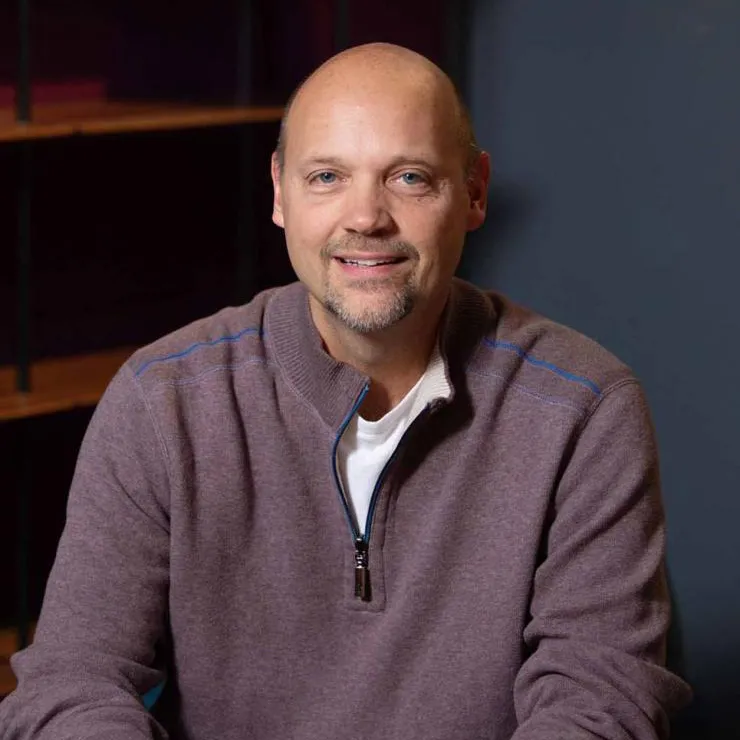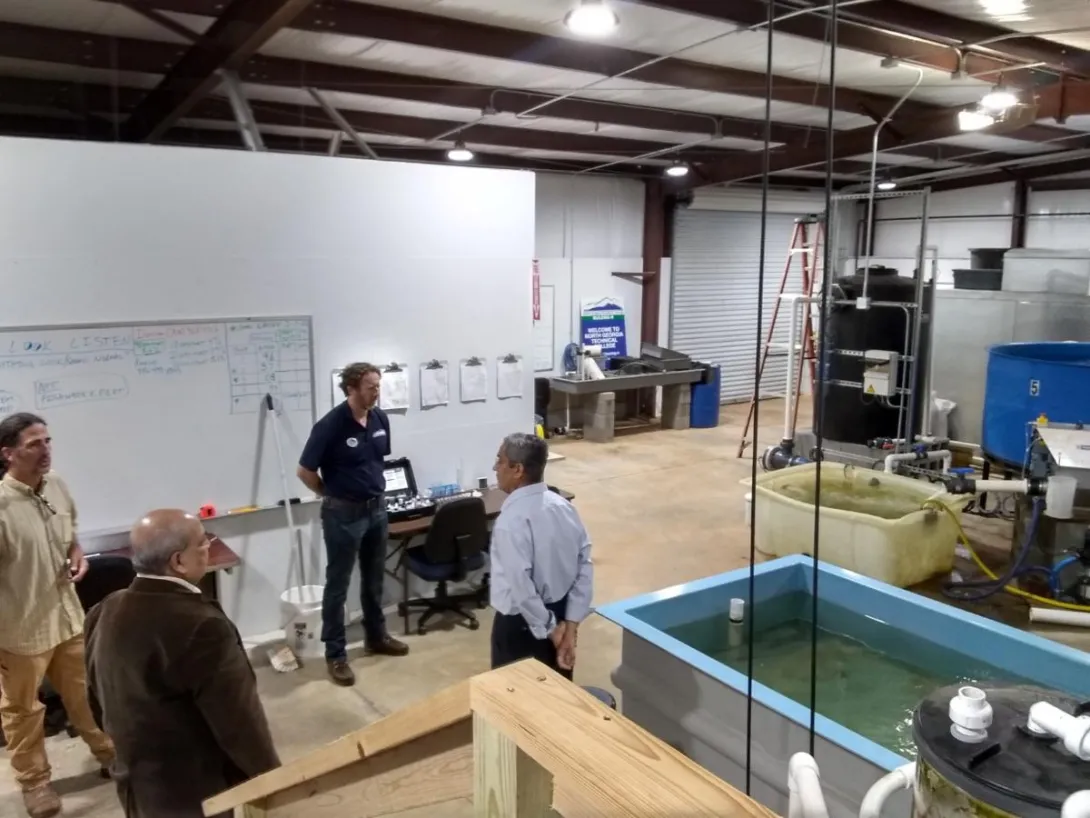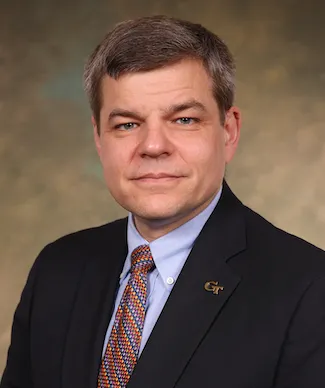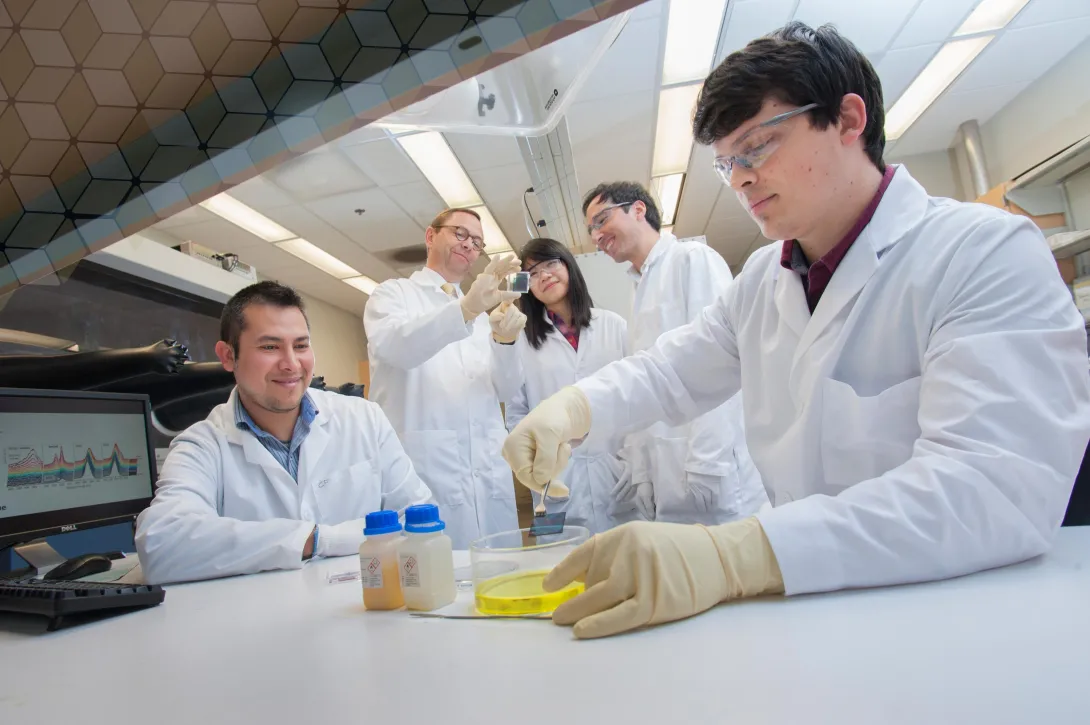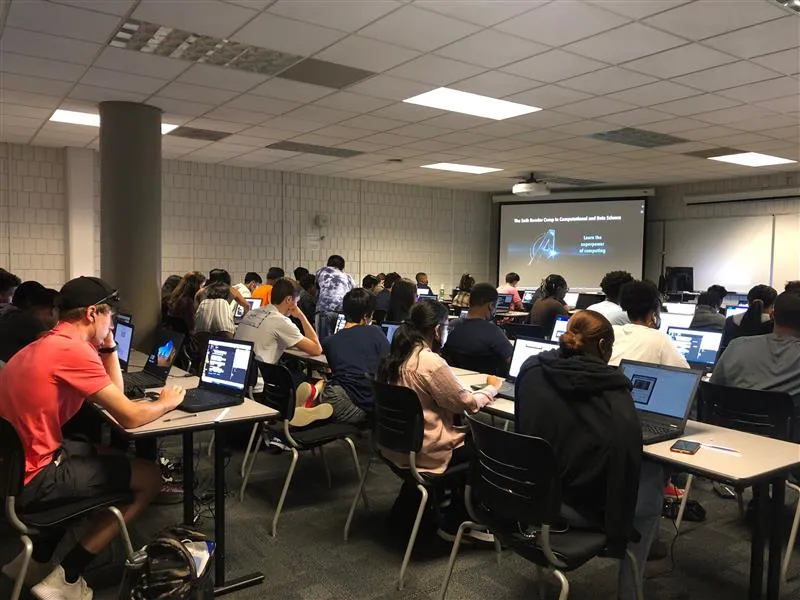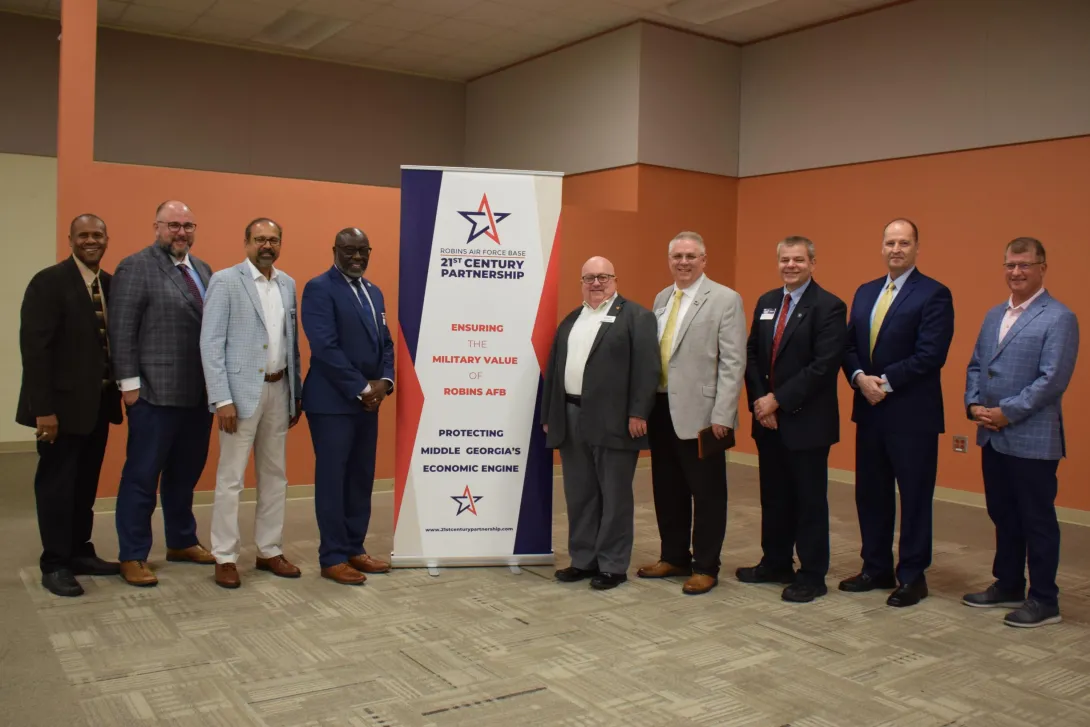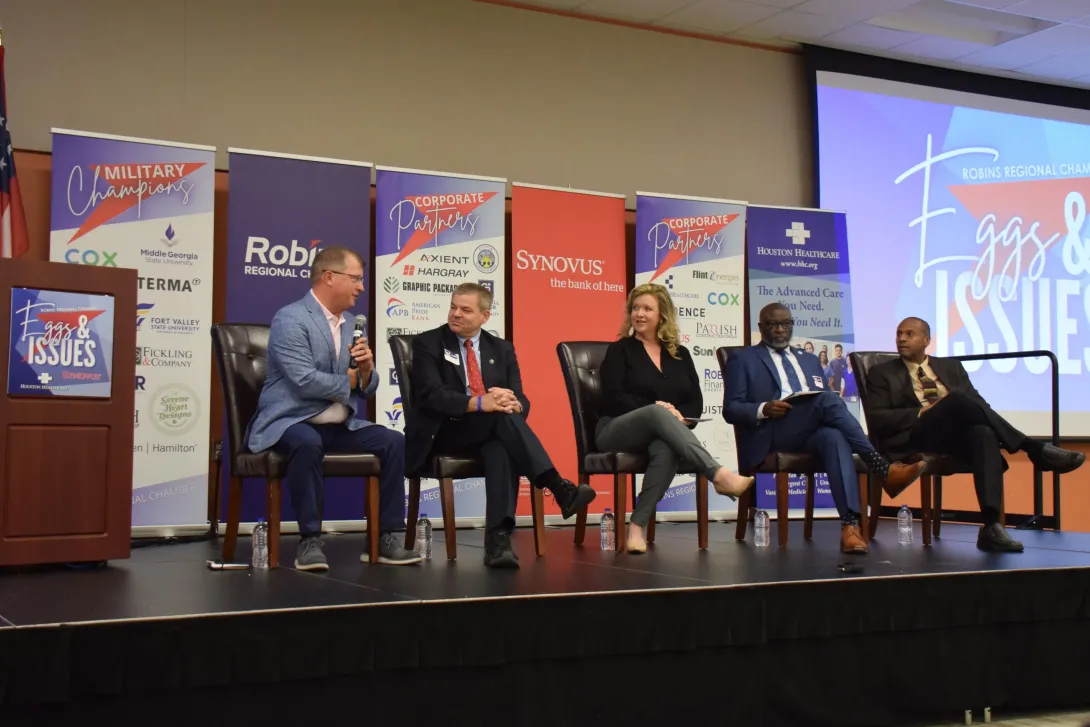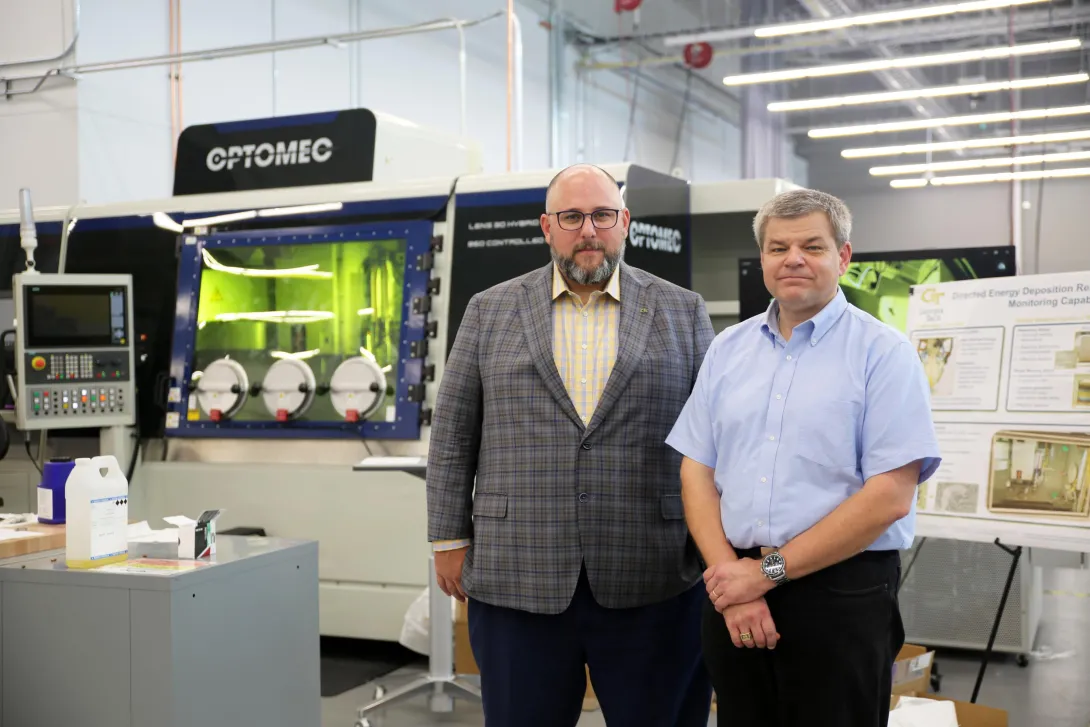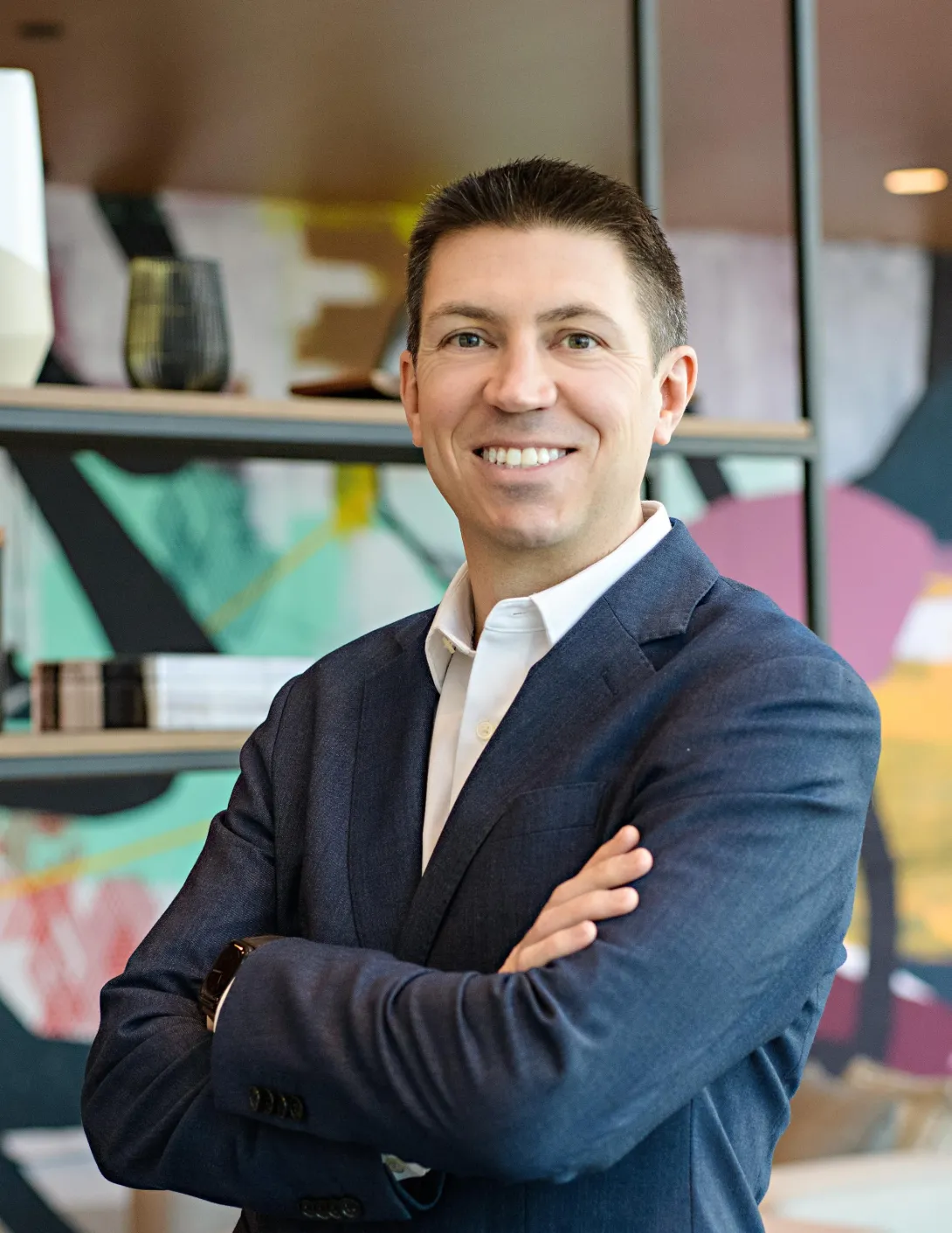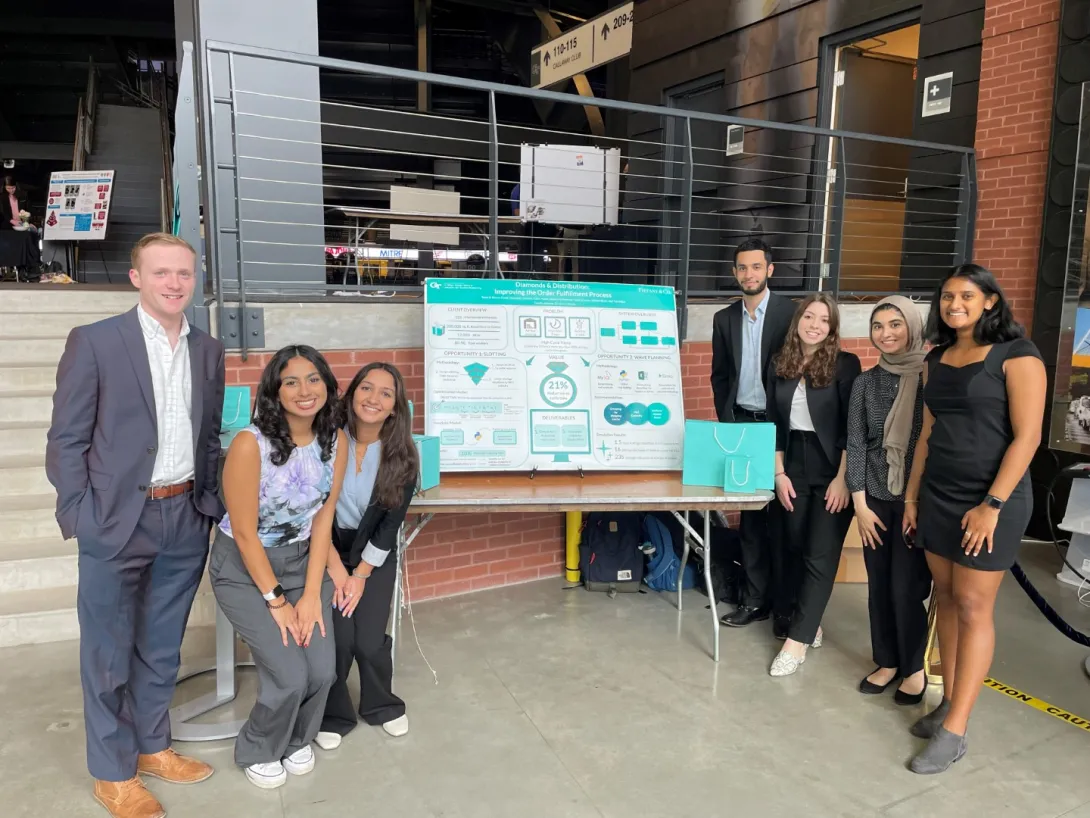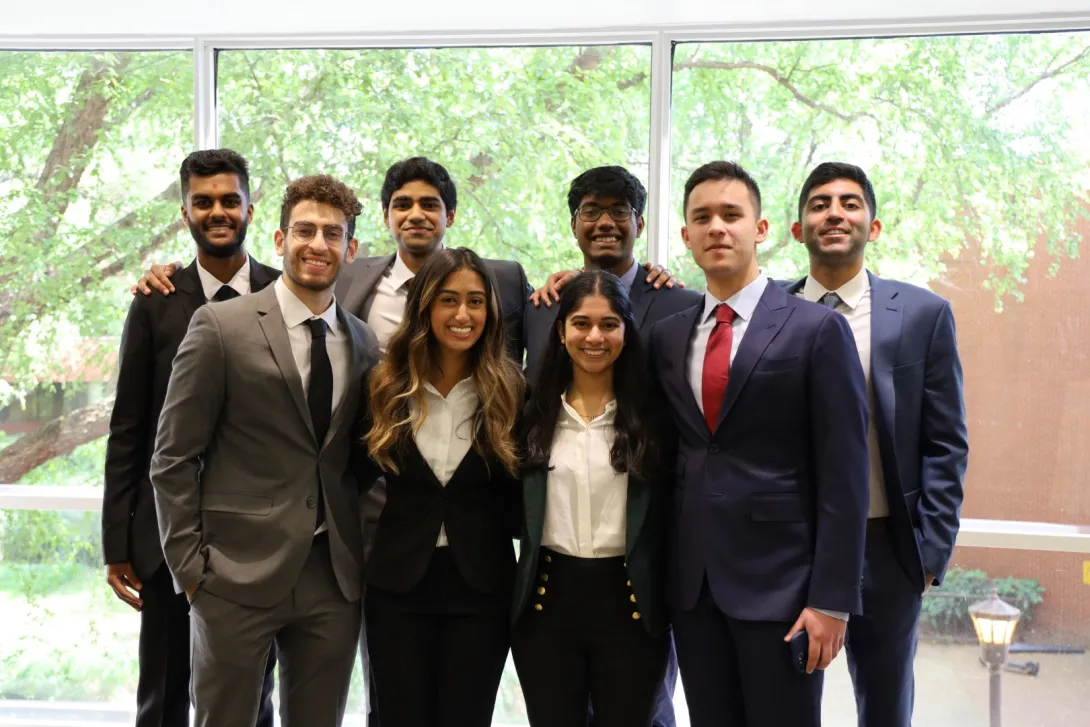Oct. 26, 2022
Joe Verbraska joined Steelcase in 1995 and currently serves as Director of Global Logistics. Throughout his 27-year career at Steelcase, Mr. Verbraska has worked as a Financial Analyst, led manufacturing operations in two of the largest plants for Steelcase North America, served as Director of Logistics Operations in Europe, and was Director of North American Logistics with responsibility for Transportation and Distribution. He has been instrumental in developing the logistics strategy for Steelcase, including creating and implementing the company’s distribution network.
Before joining Steelcase, Mr. Verbraska worked as a supply chain consultant at Accenture and held IT, finance and logistics roles at Whirlpool. Mr. Verbraska earned his bachelor’s degree in Information Systems at Ferris State University and his MBA from the University of Chicago.
Oct. 25, 2022
During the summer, Duncan Hughes, an Environmental Technology instructor at North Georgia Technical College (NGTC) introduced his students to the web application Virtual Ecological Research Assistant, better known as VERA. It allowed students to construct conceptual models and ecological systems, as well as run interactive model simulations on the brook trout, a species of freshwater fish.
Hughes and his students sought to answer questions about reproduction and food supply, as they worked to add new complexities to the VERA application from different species of trout, circumstances, to changes. According to the Encyclopedia of Life (EOL), an international effort, led by the Smithsonian Institution's National Museum of Natural History, brook trout are found in three types of aquatic environments: rivers, lakes, and marine areas and their living requirements in these environments.
“Originally when we populated the brook trout, we noticed the brown trout shared the same life history and ecological information, but we were able to find enough information from the Encyclopedia of Life to differentiate those species,” said Hughes. “I had my students run through the process of building these components through an instructional-based format by having them manipulate some of the parameters and probabilities.”
VERA was developed by the Design & Intelligence Lab at Georgia Tech in collaboration with EOL. The technology is being used by students as an assisting tool and is publicly accessible. The data being collected from their usage is part of the research conducted at the NSF AI Institute for Adult Learning and Online Education (AI-ALOE).
“Users can jump into our program and conduct ‘what if’ experiments by adjusting simulation parameters. This is our way of providing an accessible and informal learning tool,” said Ashok Goel, director and co-principal Investigator of AI-ALOE and computer science professor at Georgia Tech. “Using VERA as an assessment tool is excellent. These students are using VERA in a way we are not.”
Goel was recently joined by Georgia Tech graduate researcher Andrew Hornback, research scientist Sandeep Kakar, and staff member Daniela Estrada at NGTC to learn more about the work in VERA and challenges Hughes and his students faced while using the application.
“The main struggle is limitation with the EOL and database,” said Hughes. “There are some species that we just can’t find, and sometimes it is glitchy and doesn’t work right away, but it is not insurmountable.”
Another challenge Hughes’ students found was not being able to find what they wanted to complete certain tasks, such as stream and environmental patterns of comparative fish ecosystems.
With that being known, AI-ALOE is working to address these issues and more to build and cater to specific student and teacher needs. At this time, the Design & Intelligence Laboratory is in the process of expanding VERA in the capability of its on-demand agent-based simulation generator, which would enable users to divide components into separate habitats.
“It was very interesting to see the results because antidotally through much research we were able to set up all these relationships and let them run the model, and the results were exactly what we would have hypothesized what they would be given those perimeters,” said Hughes.
The technical college has plans to introduce VERA to another classroom this semester held by Natural Resource Management instructor, Kevin Peyton.
About VERA
Interested in trying out VERA? Create an account at https://vera.cc.gatech.edu/. You can also find VERA’s user guide as well as a step-by-step tutorial at http://epi.vera.cc.gatech.edu/docs/exercise.
About AI-ALOE
The NSF AI Institute for Adult Learning and Online Education (AI-ALOE) is developing an AI-based transformative model for online adult learning through research and data collection.
About NGTC
North Georgia Technical College is a residential, public, multi-campus institution of higher education serving the workforce development needs of Northeast Georgia and part of the Technical College System of Georgia.
News Contact
Breon Martin
AI Communications Officer
breon.martin@gatech.edu
Oct. 20, 2022
The North American Manufacturing Research Institution of SME (NAMRI | SME) has awarded their 2022 Outstanding Lifetime Service Award to Thomas R. Kurfess, professor in the George W. Woodruff School of Mechanical Engineering at Georgia Tech. Kurfess is the executive director of Georgia Tech’s Manufacturing Institute and holds the HUSCO/Ramirez Distinguished Chair in Fluid Power and Motion Control. SME was formerly known as the Society of Manufacturing Engineers. SME, headquartered in Southfield, Michigan, is a professional association dedicated to educating and promoting the manufacturing industry.
Kurfess, and two other Georgia Tech alumni were recognized at the 50th annual North American Manufacturing Research Conference (NAMRC) for their accomplishments in the manufacturing industry.
Georgia Tech alumni Thomas Feldhausen and Kyle Saleeby both received the Sandra L. Bouckley Outstanding Young Manufacturing Engineer Award. The award recognizes exceptional contributions in manufacturing made by engineers 35 or younger.
Kurfess first joined the faculty at Georgia Tech in 1994 and has taken on a variety of special assignments in addition to his teaching and research. From 2019-2021, Kurfess served as the chief manufacturing officer at ORNL, where he was responsible for strategic planning for ORNL in advanced manufacturing. He was also the founding director for ORNL's Manufacturing Science Division. He served as the assistant director for advanced manufacturing at the Office of Science and Technology Policy in the executive office of the President of the United States of America from 2012-2013, where he was responsible for coordinating federal advanced manufacturing research and development. He is the current executive director of the Georgia Tech Manufacturing Institute, having been appointed in June of 2022.
Previously, Kurfess was awarded the SME Albert M. Sargent Progress Award for the development of large-scale computing capabilities leveraging low-cost, high-performance computing systems to analyze large-scale manufacturing metrology data sets.
Kurfess is a member of the National Academy of Engineering and a fellow of the American Association for the Advancement of Science (AAAS), the American Society of Mechanical Engineers (ASME) and the Society of Manufacturing Engineers (SME). He was president of SME in 2018 and currently serves on the ASME Board of Governors.
For more information about these award winners, view the Woodruff School of Mechanical Engineering’s October 19, 2022 news release.
News Contact
Sep. 28, 2022
Advancement in technology brings about plenty of benefits for everyday life, but it also provides cyber criminals and other potential adversaries with new opportunities to cause chaos for their own benefit.
As researchers begin to shape the future of artificial intelligence in manufacturing, Georgia Tech recognizes the potential risks to this technology once it is implemented on an industrial scale. That’s why Associate Professor Saman Zonouz will begin researching ways to protect the nation’s newest investment in manufacturing.
The project is part of the $65 million grant from the U.S. Department of Commerce’s Economic Development Administration to develop the Georgia AI Manufacturing (GA-AIM) Technology Corridor. While main purpose of the grant is to develop ways of integrating artificial intelligence into manufacturing, it will also help advance cybersecurity research, educational outreach, and workforce development in the subject as well.
“When introducing new capabilities, we don’t know about its cybersecurity weaknesses and landscape,” said Zonouz. “In the IT world, the potential cybersecurity vulnerabilities and corresponding mitigation are clear, but when it comes to artificial intelligence in manufacturing, the best practices are uncertain. We don’t know what all could go wrong.”
Zonouz will work alongside other Georgia Tech researchers in the new Advanced Manufacturing Pilot Facility (AMPF) to pinpoint where those inevitable attacks will come from and how they can be repelled. Along with a team of Ph.D. students, Zonouz will create a roadmap for future researchers, educators, and industry professionals to use when detecting and responding to cyberattacks.
“As we increasingly rely on computing and artificial intelligence systems to drive innovation and competitiveness, there is a growing recognition that the security of these systems is of paramount importance if we are to realize the anticipated gains,” said Michael Bailey, Inaugural Chair of the School of Cybersecurity and Privacy (SCP). “Professor Zonouz is an expert in the security of industrial control systems and will be a vital member of the new coalition as it seeks to provide leadership in manufacturing automation.”
Before coming to Georgia Tech, Zonouz worked with the School of Electrical and Computer Engineering (ECE) and the College of Engineering on protecting and studying the cyber-physical systems of manufacturing. He worked with Raheem Beyah, Dean of the College of Engineering and ECE professor, on several research papers including two that were published at the 26th USENIX Security Symposium, and the Network and Distributed System Security Symposium.
“As Georgia Tech continues to position itself as a leader in artificial intelligence manufacturing, interdisciplinarity collaboration is not only an added benefit, it is fundamental,” said Arijit Raychowdhury, Steve W. Chaddick School Chair and Professor of ECE. “Saman’s cybersecurity expertise will play a crucial role in the overall protection and success of GA-AIM and AMPF. ECE is proud to have him representing the school on this important project.”
The research is expected to take five years, which is typical for a project of this scale. Apart from research, there will be a workforce development and educational outreach portion of the GA-AIM program. The cyber testbed developed by Zonouz, and his team will live in the 24,000 square-foot AMPF facility.
News Contact
JP Popham
Communications Officer | School of Cybersecurity and Privacy
Georgia Institute of Technology
jpopham3@gatech.edu | scp.cc.gatech.edu
Sep. 27, 2022
The Scalable Asymmetric Lifecycle Engagement Microelectronics Workforce Development program (SCALE) has announced the program will extend another five years and expand with $10.8 million additional Department of Defense (DoD) funding, with a ceiling of $99 million.
SCALE officials said this expansion of the nation’s preeminent program will further its goal to develop a next-generation workforce that can return the United States to prominence in global microelectronics manufacturing.
Georgia Tech participates in the partnership, which is led by Purdue University and managed by NSWC Crane. SCALE facilitates the training of highly skilled U.S. microelectronics engineers, hardware designers and manufacturing experts. SCALE brings together a public-private-academic partnership of 17 universities and 34 partners within the defense industry and government.
“This is an extremely exciting time in the country and at Tech for microchip design and manufacturing,” said Arijit Raychowdhury, the Steve W. Chaddick School Chair of Tech’s School of Electrical and Computer Engineering (ECE). “These newly announced funds for the SCALE program will help Georgia Tech recruit a new, diverse group of students ready to work in defense microelectronics. We’re thrilled to be a SCALE partner university and honored to be leading many of the project’s specialty areas.”
SCALE provides unique courses, mentoring, internship matching and targeted research projects for college students interested in five microelectronics specialty areas. Georgia Tech ECE faculty members will be the primary investigators for three of the areas:
- system on a chip will be led by Raychowdhury;
- radiation-hardening will be led by John Cressler;
- and heterogeneous integration/advanced packaging will be led by Madhavan Swaminathan.
The other two focus areas are embedded system security/trusted AI and supply chain awareness.
Industry and government partners regularly meet and update a list of knowledge, skills, and abilities important for new entrants to the workforce. The SCALE universities then update their curriculum to ensure the students are prepared for upcoming needs in the rapidly advancing microelectronics field.
Peter Bermel, SCALE director and the Elmore Associate Professor of Electrical and Computer Engineering at Purdue, said the United States will need 50,000 trained semiconductor engineers to meet overwhelming and rapidly growing demand.
“The United States is committed to expanding and strengthening its semiconductor industry and workforce rapidly over the next five years,” Bermel said. “SCALE takes a holistic approach to the microelectronics workforce gap by comprehensively addressing system challenges for workforce training and recruiting.”
Goals for the next five years include:
- Expanding student participation in SCALE fivefold to more than 1,000.
- Developing learning models for K-12 classrooms.
- Collaborating with community colleges nationwide to develop microelectronics classes.
The demand for microelectronics increased by 26.2% in 2021. But while the United States consumes about half of the chips produced worldwide, the country only manufactures about 12%, highlighting the pressing need for the U.S. to strengthen its domestic semiconductor supply chains and increase industrial capacity.
The funding announcement is the latest highlight in Georgia Tech’s leadership role in bolstering microelectronics and workforce development. Tech’s large engineering and science faculty bring a broad set of research expertise to strengthen the country’s semiconductor capacity. The Institute is uniquely positioned to train the microelectronics workforce, drive future microelectronics advances, and provide fabrication and packaging facilities for industry, academic and government partners to develop and test new solutions.
###
The Georgia Institute of Technology, or Georgia Tech, is a top 10 public research university developing leaders who advance technology and improve the human condition. The Institute offers business, computing, design, engineering, liberal arts, and sciences degrees. Its nearly 44,000 students, representing 50 states and 149 countries, study at the main campus in Atlanta, at campuses in France and China, and through distance and online learning. As a leading technological university, Georgia Tech is an engine of economic development for Georgia, the Southeast, and the nation, conducting more than $1 billion in research annually for government, industry, and society.
News Contact
Dan Watson
dwatson@ece.gatech.edu
Sep. 15, 2022
When Alexandria Sweeny, better known as Alex, considered what she wanted to accomplish before graduating from Drew Charter School, the then high school junior set two goals: complete her engineering internship and make a positive impact.
She did both while strengthening her coding knowledge during her time as a camper and mentor at the Seth Bonder Camp in Computational and Data Science for Engineering (SBC).
“I did it when it was fully virtual, and it was definitely an experience,” said Sweeny who spent a week being introduced to computing and data science where she performed virtual activities, last June.
The camp, which is offered either as an online course or on-campus summer camp at Georgia Tech, is designed to build students’ problem-solving and analytical skills while furthering their interest in computer science as a potential career. It is also part of AI4OPT’s mission to inspire young Georgians to pursue STEM (science, technology, engineering and mathematics).
AI4OPT hosted its first in-person summer camp at Georgia Tech in June. The camp brought together 60 students from schools across Georgia including Drew Charter, Banneker High School, and Westlake High School.
Sweeny was asked to return to this particular camp—but this time, as a mentor.
“Of course, I said yes, because it was something fun that I could do over the summer preparing for college without it being too hefty,” said Sweeny. “It was something that I felt prepared for from attending the camp.”
Responses like Sweeny’s motivates SBC Site Managers like Reem Khir to introduce more bright minds to the camp centered around computer programming logic, programming language for AI, and teamwork.
“We expose them [high school students] to certain types of education areas like Twitter analysis, how to solve a sudoku, and even computational biology, if they wanted to consider a career in biology,” said Khir, who joined the camp last year to help students with assignments. This year, she took on even bigger leadership role by maintaining and observing two camps and facilitating 50 students and seven teaching assistants (TAs). She worked under a ‘student to student and student to TA’ interactive structure so that each participant took away a useful skill in data science.
“It’s the time where high school students start forming opinions and decisions about the career path they want to pursue,” said Khir. “The steppingstone is their college education, and we can help students in that period.”
AI4OPT Will Acquire and Advance Seth Bonder Camp
AI4OPT is working to adopt a short-term system used to track students after the camp. The institute wants to build up the system to see majors, colleges, and career paths each student has vowed to pursue before they head off to college or the workforce.
“This is a critical period for students,” said Khir. “It’s a time where students start thinking about a major for college and later impacting the next 20 or 30 years of their life. Being a part of that is very unique in terms of creating a positive influence in the next generation.”
AI4OPT is taking the lead over the SBC to offer the initiative more organizational support as the program has seen tremendous growth and has become a much broader initiative. The Seth Bonder Foundation, which first introduced the camp to those ages 10-18, will continue to fund the camp now more targeted towards high school students interested in engineering, but do not have access to computer science and/or data science in their middle and high schools.
“A lot of the different communities are not exposed to this and may never see this opportunity. The Seth Bonder Camp exposes high school students to AI opportunities and gives them skills to successfully enter the field of STEM with confidence,” said Professor Pascal Van Hentenryck, who’s brought his data sciences skills and knowledge to Georgia Tech and leads both AI4OPT and the SBC.
AI4OPT is in transition to lead the SBC to offer more organizational support as the program sees tremendous growth. The research Institute will expand the longitudinal camps to engage middle and high school students in these topics, while also bringing AI education and research programs to HBCU’s and Hispanic-serving colleges throughout the nation, addressing the widening gap in job opportunities.
Though Sweeny has transitioned away from coding and transcended into research, she never stopped setting goals even now as a first-year biomedical engineering major at Georgia Tech.
“Do anything you can to take it [the SBC] even if you don't want to go into coding,” said Sweeny. “It is a good way to meet new people learn new skills, it is something that you don't necessarily have to have a love for coding to have to do it.”
To learn more about the Seth Bonder Camp in Computational and Data Science for Engineering and to partner with the camp, visit sethbondercamp.isye.gatech.edu.
(Writer’s note: This article is part of a series highlighting AI4OPT members, students, education programs and professional development testimonies.)
Sep. 09, 2022
Thomas Kurfess, executive director of the Georgia Tech Manufacturing Institute, was one of the featured panelists at the Robins Regional Chamber’s Eggs and Issues breakfast event on September 8. The topic of discussion was the Robins Air Force Base (RAFB) 21st Century Partnership.
The 21st Century Partnership, a Georgia nonprofit corporation, is the only community enterprise dedicated solely to preserving the military presence of Robins Air Force Base, while helping Middle Georgia communities prepare to avert potential efforts to marginalize the missions of the base. RAFB hires approximately 300 scientists and engineers each year.
The Eggs & Issues breakfast series, sponsored by the Robins Regional Chamber, focuses on timely topics of local interest related to their middle Georgia community. This event discussed the 21st Century Partnership’s priorities, progress, and engagement opportunities.
The panelists included:
- Brigadier General John Kubinec, USAF, retired, president and CEO, 21st Century Partnership
- Angie Gheesling, executive director, Houston County Development Authority
- Paul Jones, president, Fort Valley State University
- Ivan Allen, president, Central Georgia Technical College
- Thomas Kurfess, executive director, Georgia Tech Manufacturing Institute
Aaron Stebner, associate professor in the Woodruff School of Mechanical Engineering, and Greg King, associate vice president for economic development at Georgia Tech, were also representing Georgia Tech at the event. Kurfess, professor in the Woodruff School of Mechanical Engineering and the HUSCO/Ramirez Distinguished Chair in Fluid Power and Motion Control, regularly visits Robins Air Force Base to support a long-standing relationship with Georgia Tech.
Stebner and Kurfess are leading a $65 million U.S. Department of Commerce economic development administrative award to create a Georgia Artificial Intelligence Manufacturing Technology Corridor with the vision of collaborative innovation and economic development across all regions of the state.
News Contact
Sep. 06, 2022
Aaron Stebner outlined an aggressive plan for artificial intelligence and manufacturing when he applied for a faculty position in 2019. In his cover letter, he promised “to establish the Georgia Institute of Technology as a world leader in additive manufacturing of solid materials (ceramics & metals) R&D, especially in the fusion of data sciences and AI to create new, world-leading technologies.”
Stebner thought it would take 10-15 years of incremental steps and funding to achieve the goal. He was wrong.
Thanks to a new $65 million grant from the U.S. Department of Commerce’s Economic Development Administration, announced by President Joe Biden, Stebner’s plan will begin to become a reality — and include the entire state of Georgia and all of its manufacturing sectors from agriculture to airplanes — two years after arriving on campus.
The largest of the nine projects within the larger Georgia AI Manufacturing (GA-AIM) technology corridor grant will allow Stebner and Georgia Tech to transform the Advanced Manufacturing Pilot Facility (AMPF) into the Artificial Intelligence Manufacturing Pilot Facility (AI-MPF). The 24,000 square-foot facility on 14th Street will more than double in size after Georgia Tech and statewide GA-AIM partners were selected as one of 21 Phase II awardees in the $1 billion Build Back Better Regional Challenge (BBB) competition, part of the Investing in America’s Communities initiative under the American Rescue Plan Act of 2021.
AMPF has been a shell waiting for a vision like Build Back Better to fill it out,” said Stebner, associate professor the George W. Woodruff School of Mechanical Engineering and the School of Materials Science and Engineering. “Now we will transform the facility into one of the nation’s first manufacturing labs designed for autonomy with the goal of helping the state and the nation to be world AI manufacturing leaders.”
Read the entire story on the College of Engineering website.
News Contact
Jason Maderer
College of Engineering
maderer@gatech.edu
Aug. 31, 2022
Chris Shaver serves as the Vice President of Global Product Management for Dematic. He joined Dematic in 2020, leading the Global Vertical Strategy team before transitioning to lead the Global Product Management organization in early 2022.
Mr. Shaver brings a wide array of executive supply chain experience to SCL. Prior to joining Dematic in 2020, he built and ran the omni-channel operations organization for Chico’s FAS, a multi-billion dollar women’s apparel retail organization. Prior to his time at Chico’s FAS, Mr. Shaver spent over a decade in the management consulting industry delivering both strategic and operationally-focused supply chain initiatives to Fortune 500 organizations. Mr. Shaver is a graduate of Georgia Tech and currently resides in Atlanta, GA.
Aug. 23, 2022
We would like to congratulate two ISyE Senior Design teams for their outstanding performance in the Capstone Design competition organized by the Material Handling Industry (MHI) and College Industry Council on Material Handling Education (CICMHE).
Team "Tiffany and Co. Diamonds and Distribution: Improving the Order Fulfillment Process" won 1st place, which also comes with a monetary award of $2,000 split among the students on the team. The team worked on a project to improve Tiffany's domestic and international order fulfillment goals. After the students identified a cause for delays in the value-added services station of warehouses, they created an optimization model and a heuristic to dynamically find the most efficient location for each item. The student team also created an application that the client can utilize themselves to run the models annually.
Students: Shreya Desai | Ozashwee Ghimire | Fares Hasan | Saman Muhammad | Neha Srivatsa | William Reich | Asli Yucebilgin
Client Sponsor: Stephanie Brumby
Faculty Advisor: Dr. Gunter Sharp
Team "SAIA. SAIA-ZING UP: Evaluation of Terminal Expansion", a senior design technical competition finalist, was recognized with an Honorable Mention. The team worked with the Industrial Engineering team at Saia LTL Freight to aid in their terminal expansion implication process. Saia has set out an aggressive growth goal of opening 10-15 terminals in the next year. The model simulated a quantification of network changes as a result of additions to Saia’s network, including operational, freight flow, and cost. The system model provides Saia with proactive, data-driven insight to the impacts on their network during their terminal expansion.
Team Members: Joey Abi-Sarkis | Abhishek Mattipalli | Maya Menon | Jay Patel | Santhosh Saravanan | Abhinav Sehgal | Pooja Sharma | Yashovarman Singh
Client Contact: Ryan Madura
Faculty Advisor: Dr. Anton Kleywegt
Congratulations to both teams, their clients, and their faculty advisors.
